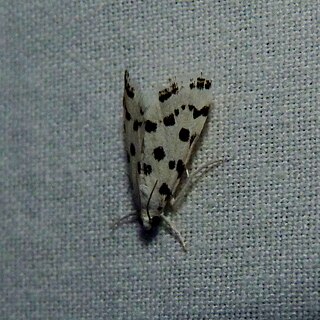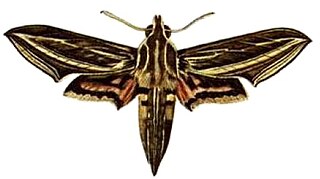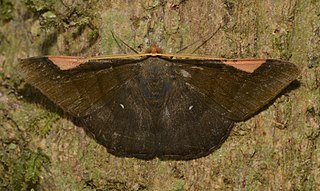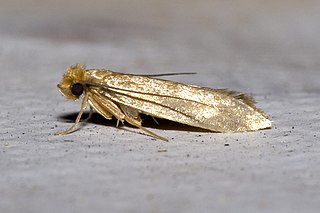 W
WAgathia conviridaria is a moth of the family Geometridae first described by Jacob Hübner in 1823. It is found in India and Sri Lanka.
 W
WAgrotis ripae, the sand dart, is a moth of the family Noctuidae. The species was first described by Jacob Hübner in 1823. It is found in western Europe and North Africa and extends east across the Palearctic to steppe areas in Russia, Mongolia and Siberia.
 W
WCatocala antinympha, the sweetfern underwing, is a moth of the family Erebidae. It is found from Quebec and Ontario east to Nova Scotia and south to Connecticut, Rhode Island, New York, Massachusetts, Pennsylvania and Maryland.
 W
WCatocala ultronia, the dark red underwing or ultronia underwing, is a moth of the family Erebidae. The species was first described by Jacob Hübner in 1823. It is found in most of eastern North America, south to Florida and Texas. It ranges west across the southern parts of Canada to extreme southeast British Columbia.
 W
WCoenipeta bibitrix is a genus of moths in the family Erebidae. The species is found from southern Florida and southern Texas, south to northern South America.
 W
WEnnomos subsignaria, the elm spanworm moth, is a moth of the family Geometridae. The species was first described by Jacob Hübner in 1823. It is found in North America from Texas (south) to Alberta (northwest) and east to the Atlantic coast. It is recorded infrequently in Great Britain through accidental importation in asparagus.
Epascestria pustulalis is a species of moth in the family Crambidae. It is found in large parts of Europe, except Ireland, Great Britain, Norway, Finland, Denmark, the Benelux, France, Switzerland, Portugal, Slovenia and Croatia. It is also present in the Near East, including Lebanon and Turkey.
 W
WEulepidotis alabastraria is a moth of the family Erebidae first described by Jacob Hübner in 1823. Many former members of the moth family Noctuidae are classified in the family Erebidae now, along with all of the former members of the families Arctiidae and Lymantriidae. This re-classification has not yet met with general consensus, and many resources and publications still follow the older classification scheme. It is found from the southern part of the United States to Central and South America.
 W
WEuparthenos is a monotypic moth genus in the family Erebidae erected by Augustus Radcliffe Grote in 1876. Its only species, Euparthenos nubilis, the locust underwing, was first described by Jacob Hübner in 1823. The adults resemble some of the underwing moths of genus Catocala, which are fairly close relatives, in color, pattern, and the habit of resting on tree trunks. But E. nubilis can usually be immediately recognized by the four concentric black bands per hindwing, as opposed to one or two in Catocala. Color morphs of E. nubilis with altered pattern are known, however, and these may be hard to recognize without detailed examination.
 W
WEustixia is a monotypic moth genus of the family Crambidae described by Jacob Hübner in 1823. Its only species, Eustixia pupula, the spotted peppergrass moth, described by the same author in the same publication, is found in North America from Massachusetts to Florida, west to Texas and north to Ontario.
 W
WHippotion osiris is a moth of the family Sphingidae. It is common throughout most of the Ethiopian Region, including Madagascar and the Seychelles. Occasional vagrants have been recorded from Spain. It is uncommon on the East African coast. This species is an occasional migrant.
 W
WIsognathus leachii is a moth of the family Sphingidae.
 W
WLintneria eremitus, the hermit sphinx, is a moth of the family Sphingidae. The species was first described by Jacob Hübner in 1823. It is found in the temperate areas of the eastern United States, north into southern Canada over the Great Plains. It prefers gardens and yards, but is common wherever the nectar and larval host plants are found. This moth is easily confused with the Canadian sphinx but these two moths do not typically co-occur.
 W
WMacroglossum trochilus, the African hummingbird hawk-moth, is a moth of the family Sphingidae. The species was first described by Jacob Hübner in 1823. It is very common in most habitats throughout southern and eastern Africa and in the Comoro Islands.
Metasia suppandalis is a species of moth in the family Crambidae. It is found in France, Spain, Portugal, Croatia, Bulgaria, Romania, the Republic of Macedonia, Albania, Greece and Russia.
 W
WPantherodes pardalaria is a species of moth in the family Geometridae first described by Jacob Hübner in 1823.
 W
WPhaloe cruenta is a moth of the subfamily Arctiinae first described by Jacob Hübner in 1823. It is found in South America, including Brazil, Argentina, Paraguay, Bolivia and Uruguay.
 W
WProutiella vittula is a moth of the family Notodontidae. It is endemic to the Atlantic coastal forest of Brazil.
 W
WSphacelodes vulneraria is a species of geometrid moth in the family Geometridae. It is found in the Caribbean Sea, Central America, North America, and South America.
 W
WSphinx chersis, the great ash sphinx or northern ash sphinx, is a moth that belongs to the family Sphingidae.
 W
WSyllepte incomptalis is a moth in the family Crambidae. It was described by Jacob Hübner in 1823. It is found in Suriname.
 W
WSynanthedon exitiosa, the peachtree borer, is a species of moth in the family Sesiidae that is native to North America.
 W
WSynchlora gerularia is a moth in the family Geometridae. It is found from Texas in the southern United States through Central America to Argentina in South America. It is also found on the Antilles.
 W
WSyngrapha microgamma, the little bride looper moth, is a moth of the family Noctuidae. The species was first described by Jacob Hübner in 1823. It is found in much of Canada south in the east to southern Maine, northern New York, and the Great Lakes states. In Europe, it is found from Fennoscandia and central Europe east to mountains eastern Asia.
 W
WTineola bisselliella, known as the common clothes moth, webbing clothes moth, or simply clothing moth, is a species of fungus moth. It is the type species of its genus Tineola and was first described by Arvid David Hummel in 1823. The specific name is commonly misspelled biselliella – for example by G. A. W. Herrich-Schäffer, when he established Tineola in 1853.
 W
WWestermannia superba is a moth of the family Nolidae first described by Jacob Hübner in 1823. It is found on New Guinea, Australia (Queensland), India, Sri Lanka, Singapore and on Sumatra, Borneo and Palawan.
 W
WXylophanes porcus, the porcus sphinx, is a moth of the family Sphingidae. The family was first described by Jacob Hübner in 1823. It is found from Florida south to Bolivia.